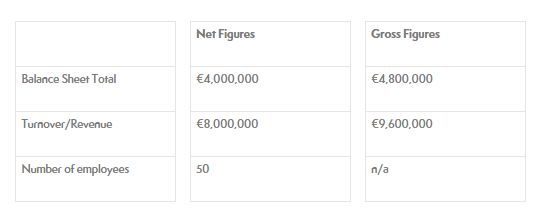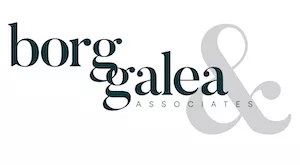Congratulations if you have arrived at the stage where you are considering whether you need to consolidate your financial records. This is an important milestone typically associated with large and successful enterprises. It means that your hard work has paid off in terms of turning your business into a robust company with admirable revenue generation and a strong asset base.
Consolidations should not be a mechanical exercise done just for the sake of satisfying the criteria set out by the Companies Act. Consolidations have much more to offer, especially to the shareholders as it gives them the opportunity to analyse the financial data of the group as a whole rather than seeing fragmented pictures of all the subsidiaries. This leads business owners to naturally ask "what are the benefits of consolidations?"
Who needs to consolidate? What are the consolidation exemptions?
When it comes to consolidation, there are a few regulations that cannot be avoided and must be adhered to in their strictest manner. The first consolidation requirement which also happens to be the fulcrum of what is to follow is the fact that a company must own at least one subsidiary to be able to do any consolidations. As we can see, the term "own" might not be the correct terminology.
The main international standard which regulates consolidations is IFRS 10 - "Consolidated Financial Statements" which was issued during 2011 and became effective for periods starting on or after 1st January 2013 and superseded SIC-12 "Consolidation - Special Purposes Entities". This international reporting standard emphasises the word "control" as opposed to ownership and goes into length to determine the definition of control. While this is of utmost importance when determining whether an entity should consolidate its books or not, in the majority of the cases, control can be simply determined by looking at the subsidiaries' shareholding. As a general rule of thumb, an entity can consolidate its books with those of its subsidiaries if it owns 50% + 1 share of its subsidiaries. However, this does not mean that everyone who satisfies the 50% + 1 share rule should consolidate their books.
It is a known fact that consolidations are typically carried out by large enterprises and increases the accounting, auditing and compliance costs faced by the firm. This is because successful consolidations go much further than just aggregating the accounting figures. A number of benefits are presented in the next section.
The Malta Companies Act, also takes this into consideration and implemented thresholds and criteria to exempt firms from consolidating their financial data. By default, any firm which does not exceed two out of the below criteria for two consecutive years are exempt from carrying out any consolidation.

At this stage, if you were wondering what's the difference between Net and Gross figures, you are not alone. Part of the consolidation work requires the entity to remove related party transactions as if they never existed. Let's say a parent invoiced its subsidiary during the year and they consolidate, at consolidation stage, we are reporting the parent and subsidiary as if they were one entity and as such, if this transaction in question is not eliminated, it would imply that the entity did business with itself, which would be misleading. When these entries are eliminated, the figures are considered as Net. On the other hand, the Gross figures are the figures as they were presented at the standalone stage without any elimination.
When the firm is establishing the number of employees, it needs to take into consideration the difference between part-time and full-time employees. Part-time employees should be considered on a pro-rata basis. For example, if there are two employees both working 20 hours a week, the two are only equivalent to one full-time employee and as such only 1 employee should be counted. On the other hand, any full-time employees who were employed partially during the year, their count should be considered based on the number of weeks that have been worked during any given year. In this instance, if an employee resigned at the end of June and another employee was hired from July onwards, these two employees should be considered as if they were one employee for the headcount required as per the Companies Act.
Further consolidation exemptions exist such as in instances where the parent company is in itself the subsidiary of another company and the parent at a higher level consolidates the financial statements. The 'new' parent, i.e. in this case the parent of our parent should be registered in a Member State or an EEA state and prepare its financial statements in accordance with international financial reporting standards.
Complete overview
Consolidated financial statements give the user a complete understanding of the group, its total assets and the group's ability to generate revenue. Consolidated statements also bring along a level of harmonisation from all the subsidiaries within the group, especially to those who are outside of Malta. During the consolidation stage, certain policies would no longer be applicable and have to change to reflect the nature of the group. A typical example would be parent-owned property leased to subsidiaries. At the level of the standalone parent, this would be deemed to be an investment property but at the group level, it would change its nature to Property, Plant and Equipment.
Such changes in accounting policies bring along additional complexities such as potential changes to deferred taxation.
This harmonisation gives the user added peace of mind and enhances the overall usability of the financial statements to the group.
Income tax consolidation
However, the biggest consolidation advantage which is experienced in Malta relates to the effective tax payments. For all those companies which are registered on the island and used to benefit from the Tax Refund system, now they can benefit from paying just the effective tax rate immediately as opposed to paying the full amount of taxation and waiting until the refund is paid back by the government. This process is referred to as the creation of a fiscal unit.
This process is only made possible if one has at least two companies in Malta, more specifically a parent and subsidiary structure. For all those who own a parent and a holding, there are a few criteria that must be satisfied. The main criteria are
- Parent owns at least 95% of the holding;
- A fiscal unit is formed within the predefined deadline;
- The fiscal unit existed during the financial year in which the taxpayer is seeking the benefit; and
- There are no outstanding payments due to the government or missing returns
Conclusion
Whether your business has grown exponentially, and you can no longer be exempted from doing a consolidation, or else you would like to mitigate your tax exposure and enjoy paying the effective tax rate (typically the 5%) without having to wait for any refunds, speak to us and we will guide you and your company in the best way possible.
The content of this article is intended to provide a general guide to the subject matter. Specialist advice should be sought about your specific circumstances.


